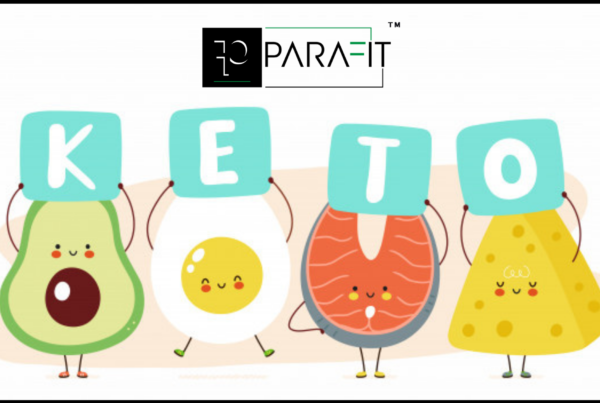DECODING DIABETES
Diabetes can strike anybody, from any walk of life and it does – in numbers that are badly increasing. Today, worldwide more than 422 million people have diabetes and surprisingly Diabetes is a growing challenge in India with estimated 8.7% diabetic population in the age group of 20 and 70 years, experiences significant barriers in successful diabetes care.
So just what exactly is diabetes?
When the pancreas fails to create insulin or is unable to use the little quantity produced, it leads to high glucose levels or sugar in blood, which is commonly known as Diabetes. Insulin helps the glucose (produced from the food we eat) to assemble the energy after it elapses from the bloodstream into the cells.
Types of diabetes
Below are the four types of diabetes that exist. However, it’s Type 1 and Type 2 diabetes that affect a majority of the population.
- Type 1 Diabetes– This type of diabetes is also known as juvenile diabetes as it develops in childhood. In this autoimmune condition, pancreas produce very little or no insulin in the body.
- Type 2 Diabetes– More people develop this type of diabetes due to incorrect lifestyle choices. This is a life-long disease that triggers when the body is unable to use the hormone insulin and keep the blood sugar in check. People with type 2 diabetes are said to be insulin resistance.
- Gestational diabetes– It occurs when high blood sugar evolves during pregnancy in a woman who had not had diabetes beforehand. These women are at a higher risk of type 2 diabetes over the next few years if they don’t change their lifestyle.
- MODY (Maturity Onset Diabetes of the Young)– MODY is a extremely rare type of diabetes that generally occurs before the age of 25 in individuals of normal weight.
The good news is, people with any type of diabetes, who elongate good control over their blood pressure, blood sugar and cholesterol regularly have a lower risk of stroke, nervous system problems and kidney disease. They can live, a prolong and healthy life.
What happens if Blood Glucose remains high and uncontrolled?
If your blood glucose remains uncontrolled or high for a long period of time, you can suffer the problems that can damage even the smallest blood vessels and nerves in your body. This occurs slowly and unalterable over time without many symptoms until the symptoms are severe. These complications and indication can include:
- Cardiovascular disease: Heart disease or stroke
- Can lead to a diabetic coma
- Eyes: Cataracts, disorders to the retina or blindness
- Foot impediment: Nerve damage or poor circulation
- Kidney disease: Chronic kidney disease or kidney failure
- Mental health: Stress, sadness, anger or depression
Dietary intervention
Incorporate foods which are fibre rich, have small Glycemic index (less than 50 Glycemic index)
- Non-starchy veggies like Bottle gourd, Bitter gourd, Cauliflower, Cabbage, Green leafy veggies like Spinach, Bathua, Methi,
- Oats, Qunioa, Barley, Yogurt, Curd
- Tea/Coffee without milk and sugar
- Buttermilk, clear vegetable soups or juices
- Fruits like kiwi, pears, plums and apples
- Nuts like Almonds and Walnuts with seeds (pumpkin, sunflower, flaxseeds) as they contain healthy fats (omega 3 fats), vitamins, minerals and antioxidants.
Did you know: Increasing the amount of fibre in your diet can help you manage your diabetes
Why is fibre important?
Having diabetes can soar your risk of cardiovascular disease. Evidence shows that increasing your intake of fibre, especially wholegrains, can help reduce the risk of cardio-metabolic diseases.
Dietary fibre absorbs fluid and increases the bulk of waste matter, which makes your stools softer and easier to pass. Increasing your dietary fibre can also help with managing your weight. These foods are filling and most are lower in glycaemic index (GI), which can help to control your appetite and have less of an effect on blood glucose levels.
Also, the adoption and prolongation of physical activity are crucial foci for blood glucose management and overall health in individuals with diabetes and prediabetes.
- Exercise is considered an important therapeutic regimen for diabetes mellitus.
- Exercise in diabetic patients promotes cardiovascular benefits by reducing cardiovascular risk and overall mortality.
- Type 1 and type 2 patients with diabetes are encouraged to do 30 to 60 minutes of moderate-intensity aerobic activity.
Prevention
Treating either type 1 diabetes or type 2 diabetes involves nutrition, activity and medicines to control blood sugar level. We at ParaFit, have recently introduced therapeutic diet, which controls PCOD/PCOS, Diabetes management, Pregnancy/Prenatal, Acne, IBS; whatever your ailment is, our customised diet has a solution for it.
We keep an eye on ideal body weight and an active lifestyle, which helps to prevent or delay the start of type 2 diabetes. If you’re overweight, losing just 5% of your body weight can reduce your risk. To know more download our ParaFit E-diet app now and get in touch with us today!







